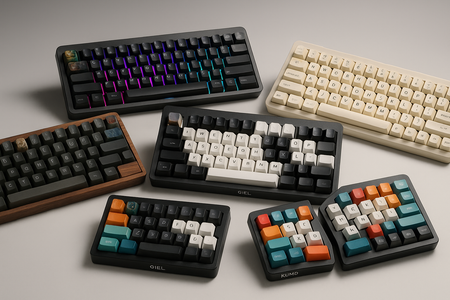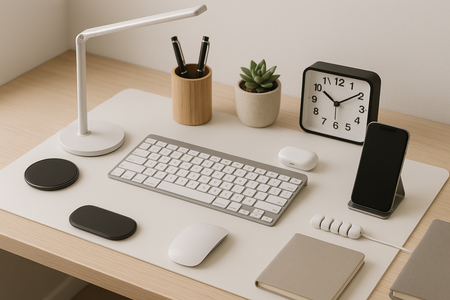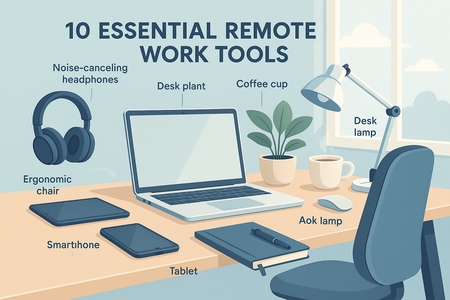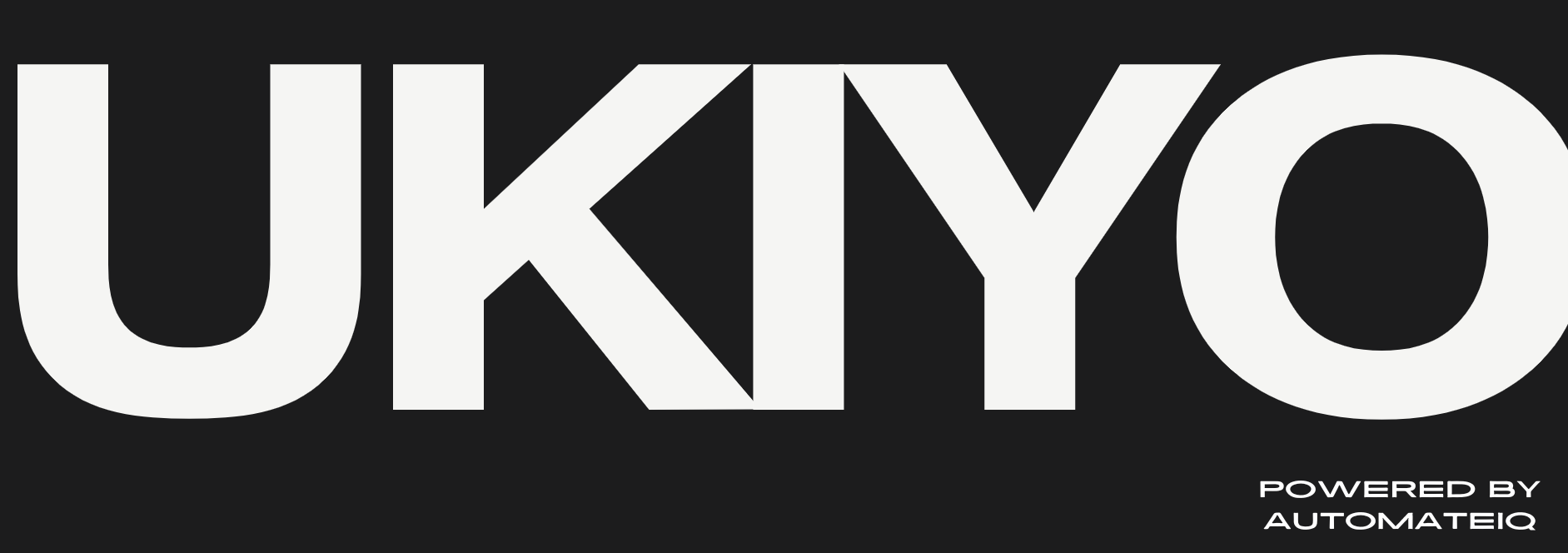The desk has always been the heart of a creative or professional setup. But in 2025, it’s no longer just a slab of wood or glass with cables trailing over the edge. Welcome to the age of AI-powered desks—intelligent workstations that anticipate your needs, optimize your workflow, and actively improve how you work every day.With built-in sensors, ambient feedback systems, smart integrations, and machine learning algorithms, these next-gen desks are designed to adapt—not distract. For remote workers, hybrid teams, and creators managing complex daily tasks, AI desks are emerging as silent collaborators that boost both wellness and output.In this post, we explore how AI desks are transforming productivity environments across industries and what features make them the next logical step in workspace innovation.
1. Desks That Learn Your Work Habits
Why It’s a Game-Changer
AI desks now come with embedded sensors and onboard machine learning that monitor your usage patterns—when you stand, sit, pause, or move—and begin tailoring the experience to your rhythms.
Key Features
- Posture Tracking via pressure and angle sensors
- Automated Sit/Stand Cycles based on daily behavior trends
- Work Session Analytics delivered weekly or in real time
- Learning Algorithms that adapt height, lighting, or reminders over time
Practical Benefits for Professionals
Instead of rigid reminders or one-size-fits-all ergonomics, your desk starts learning when you're most focused, when fatigue sets in, and how long your average flow state lasts. It then nudges you toward optimal behaviors without disrupting your work.External Source: According to Fast Company, several startups report a 15–20% boost in focus sessions after adopting adaptive desks that sync with users’ daily patterns.
2. Integrated Environmental Controls
Why It’s a Game-Changer
Your desk is becoming the dashboard for your workspace—not just holding your tech but actively regulating the space around you for comfort and focus.
Key Features
- Built-In Air Quality Monitors and temperature sensors
- Ambient Lighting Adjustments based on time of day and screen usage
- Scent & Sound Modules for stress reduction or energy boosts
- Humidity and CO2 Alerts for optimal clarity and comfort
Practical Benefits for Professionals
Writers, coders, and designers can rely on AI to adjust color temperature as daylight shifts or trigger soft focus-enhancing sounds during crunch time—all from a centralized hub, without app overload.External Source: Wired notes that ambient AI control built into furniture has led to measurable reductions in cognitive fatigue during long work sessions.
3. Voice + Gesture Commands for Workflow Shortcuts
Why It’s a Game-Changer
Forget fumbling through app windows or browser tabs. AI desks now integrate gesture and voice controls to trigger productivity sequences—lighting changes, app launches, do-not-disturb modes, and more.
Key Features
- Voice-Controlled Scenes for meetings, focus time, or end-of-day wind-down
- Gesture Recognition to change screen layouts, music, or standing height
- Macro Integration with tools like Slack, Notion, and Asana
- Privacy Mode Activations to shield screens or dim lights during sensitive sessions
Practical Benefits for Professionals
A project manager can start their daily stand-up setup—lighting, screen mirroring, and task board activation—with a single gesture or command. Creatives can enter deep work mode by waving their hand across a proximity sensor.
4. Desks That Collaborate With Your Apps
Why It’s a Game-Changer
The most forward-thinking AI desks are now being treated like IoT hubs—fully integrated into your digital toolchain. They don’t just hold your gear; they talk to it.
Key Features
- Calendar Syncing to auto-prepare environments for calls or breaks
- Focus App Integrations to block distractions during scheduled deep work
- Smart Notifications projected subtly on the desk surface or edge LEDs
- Zapier and API Hooks for full automation customization
Practical Benefits for Professionals
Your desk knows you have a client call in five minutes, raises to standing height, softens the lighting, and silences ambient alerts—without you lifting a finger. It's the productivity version of a personal studio technician.Internal Link: For more on how connected gadgets are shaping modern home offices, check out our post on How Smart Tech Is Shaping Modern Work From Home Setups.
5. Wellness Feedback & Break Automation
Why It’s a Game-Changer
AI desks now measure more than posture—they track wellness cues like stress, fatigue, hydration, and screen exposure, giving you gentle prompts or even initiating environment changes.
Key Features
- Biometric Input Support (via wearables or camera input)
- Break Scheduling with Stretch Routines or Meditation Guides
- Breathing Prompts and Focus Windows synced to your HRV or pulse
- Integration with Health Apps like Apple Health or Google Fit
Practical Benefits for Professionals
Instead of ignoring burnout until it’s too late, your desk becomes a low-key health partner. It dims the lights when you’ve been overexposed, cues up calming soundscapes, or suggests a break via ambient notifications.
What Makes the AI Desk Movement Different
AI desks go beyond mechanical upgrades or ergonomic design. They mark the convergence of furniture, tech, wellness, and automation. By turning your workstation into an intuitive collaborator, they give you space to think deeper, work smarter, and avoid burnout in the digital grind.Where smart lighting and audio tools add value around the edges, AI desks bring intelligence to the core of your physical workflow—making them a natural upgrade in the evolution of creative and professional spaces.






0 comments